
For this edition of Classic Ink, we are going to take a look back at one of the OG four-stroke motocross innovators, Husaberg.
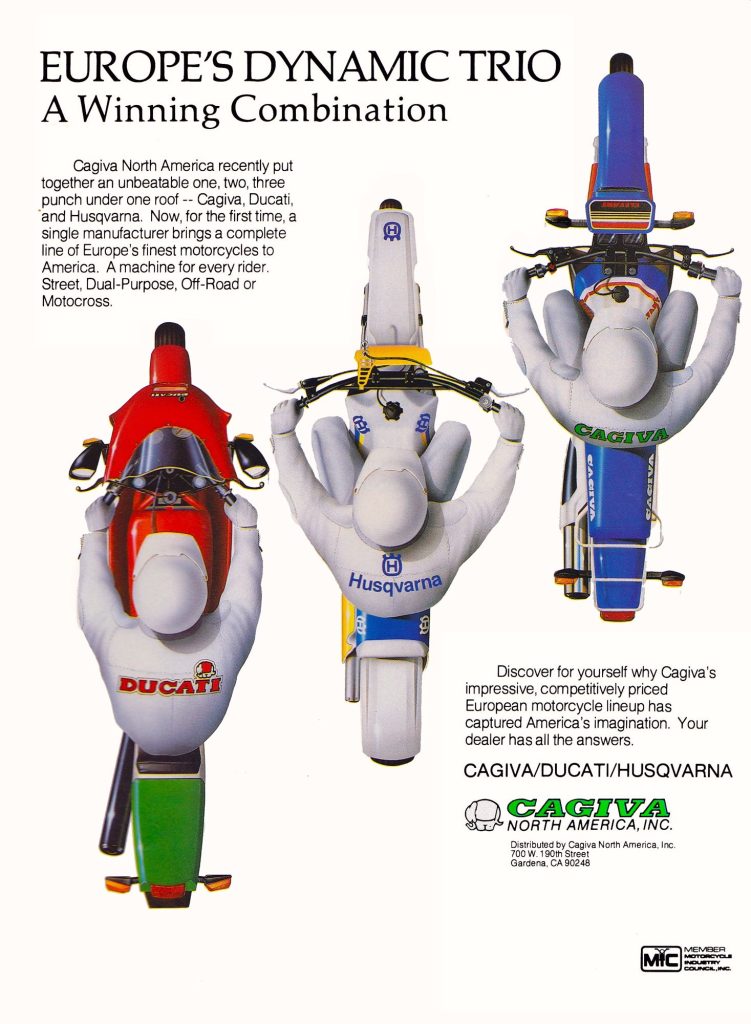 In 1987, Italy’s Cagiva purchased Husqvarna’s motorcycle operations, signaling the end of the iconic brand’s Swedish production. Photo Credit: Cagiva North America
In 1987, Italy’s Cagiva purchased Husqvarna’s motorcycle operations, signaling the end of the iconic brand’s Swedish production. Photo Credit: Cagiva North America
Today, four-stroke motocross machines are as ubiquitous as cell phones and Walmart. Everybody makes them and nearly everyone rides them. Valve-and-cam machines dominate the sport and only the most hard-core of two-stroke enthusiasts buck that trend. In the early 1990s, however, that four-stroke power dynamic was inverted. Two-strokes were the dominant machines of the time, with only the occasional converted XR, ATK, or Husqvarna making an appearance on the track. Particularly here in America, four-strokes were thought of as off-road playthings or motocross curiosities for well-to-do vet riders and iconoclasts. Here in the US, real men mixed their gas and liked it that way.
 In 1988, Thomas Gustavsson (pictured) and a small team of former Husqvarna engineers formed Husaberg Motor AB to continue the development of a Swedish-built racing four-stroke. Photo Credit: Husaberg
In 1988, Thomas Gustavsson (pictured) and a small team of former Husqvarna engineers formed Husaberg Motor AB to continue the development of a Swedish-built racing four-stroke. Photo Credit: Husaberg
In Europe, however, the venerable four-stroke had developed a small but loyal motocross following. Europe’s continued support of the Open class had led to the continued development of big-bore four-strokes for racing. While Japan saw the 500 class as a dying and unprofitable endeavor, Europe’s manufacturers saw the Open class as an opportunity to hit the Japanese where they weren’t. Exotic, eclectic, and often a bit oddball, these big-bore European four-stroke machines of the early 1990s were costly, quirky, and surprisingly competitive.
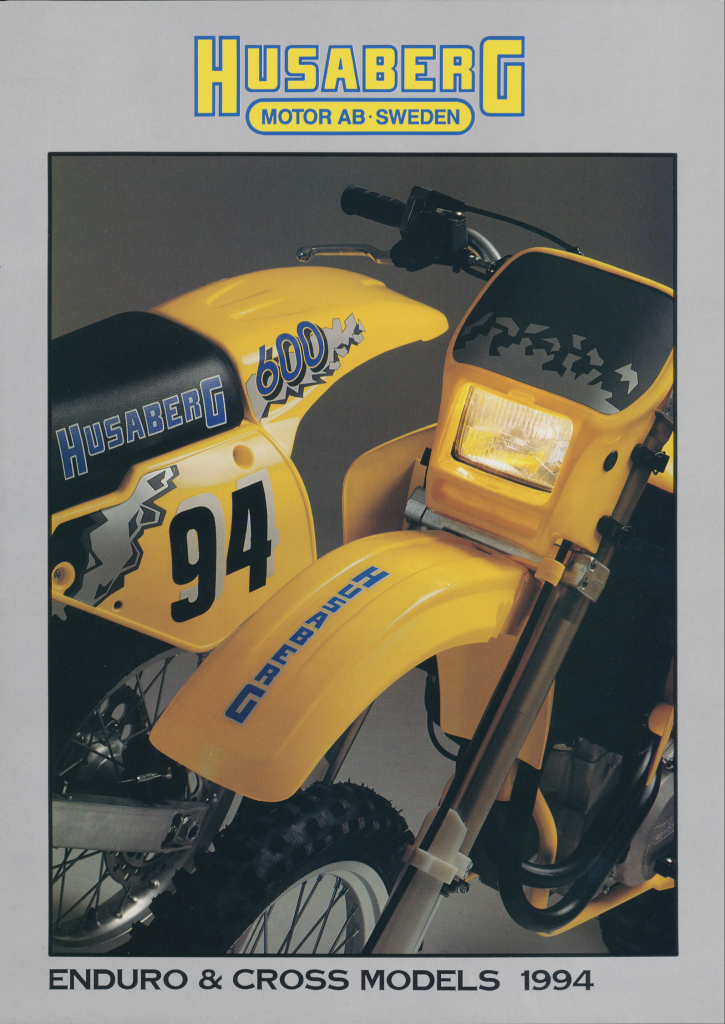 Husaberg’s 1994 lineup featured five four-stroke machines designed for maximum performance. Racers first, Husaberg’s machines were exotic, expensive, and designed to go head-to-head with the two-strokes of the day. Photo Credit: Husaberg
Husaberg’s 1994 lineup featured five four-stroke machines designed for maximum performance. Racers first, Husaberg’s machines were exotic, expensive, and designed to go head-to-head with the two-strokes of the day. Photo Credit: Husaberg
Of all the European brands that took advantage of this strategy, none exemplified it more than Sweden’s Husaberg. Founded by former Husqvarna engineers, Husaberg was born out of a desire to keep Swedish four-stoke development alive after the iconic brand was sold to Italy’s Caviga group in 1987. With motorcycle development moving to Italy, a small band of former Husqvarna employees led by Thomas Gustavsson set up shop in Röfors Sweden under the Husaberg banner in 1988. Over the next few years, Husaberg continued development of their four-strokes, quickly developing a reputation for unique styling and surprisingly robust performance. Despite their low volumes and limited resources, these late eighties and early nineties Husabergs proved very successful on the track and trail.
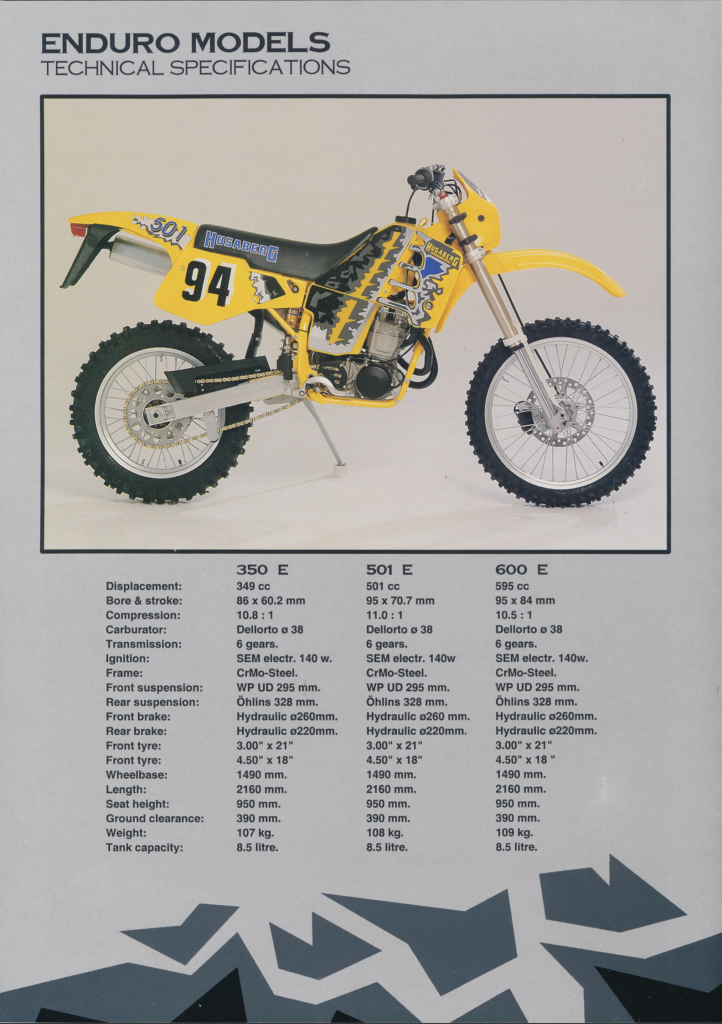 Before capturing motocross success, Husaberg’s innovative four-strokes were already scoring wins and championships in the off-road arena. By 1994, Husaberg already had three World Enduro titles on their resume and a full line of racing four-strokes for the off-road enthusiast. Photo Credit: Husaberg
Before capturing motocross success, Husaberg’s innovative four-strokes were already scoring wins and championships in the off-road arena. By 1994, Husaberg already had three World Enduro titles on their resume and a full line of racing four-strokes for the off-road enthusiast. Photo Credit: Husaberg
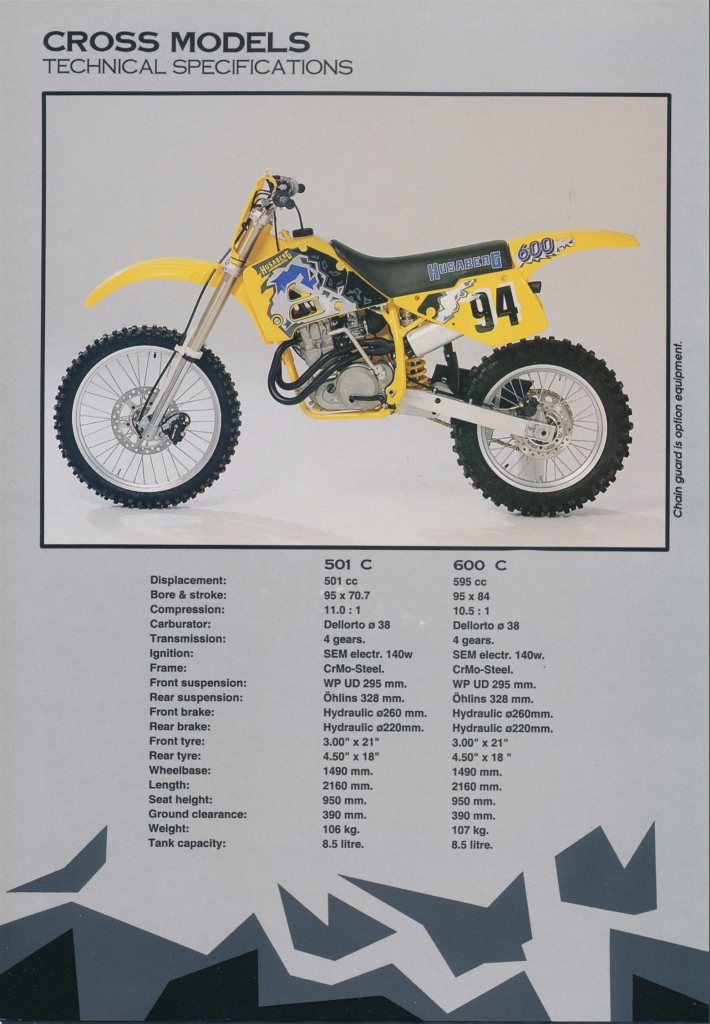 In 1994, no one even considered that a 250 four-stroke would be competitive with its two-stroke rivals so all the valve-and-cam development was focused on the Open class where the broad power and massive torque of the thumpers could make up for their additional weight and slower-building power. Photo Credit: Husaberg
In 1994, no one even considered that a 250 four-stroke would be competitive with its two-stroke rivals so all the valve-and-cam development was focused on the Open class where the broad power and massive torque of the thumpers could make up for their additional weight and slower-building power. Photo Credit: Husaberg
By the mid-1990s, Husaberg was well established on the racing map with several World Enduro wins and championships and an impressive showing in the World Motocross Grand Prix. In 1995, Belgium’s Joel Smets delivered the tiny Swedish factory their first World Motocross title beating out KTM’s two-time champ Trampas Parker for the 500cc World crown. Smets would follow that up with two additional 500cc World Motocross titles for Husaberg signaling both the arrival of the four-stroke as the dominant machine in Open class racing and validating the impressive capabilities of Sweden’s little skunkworks factory.
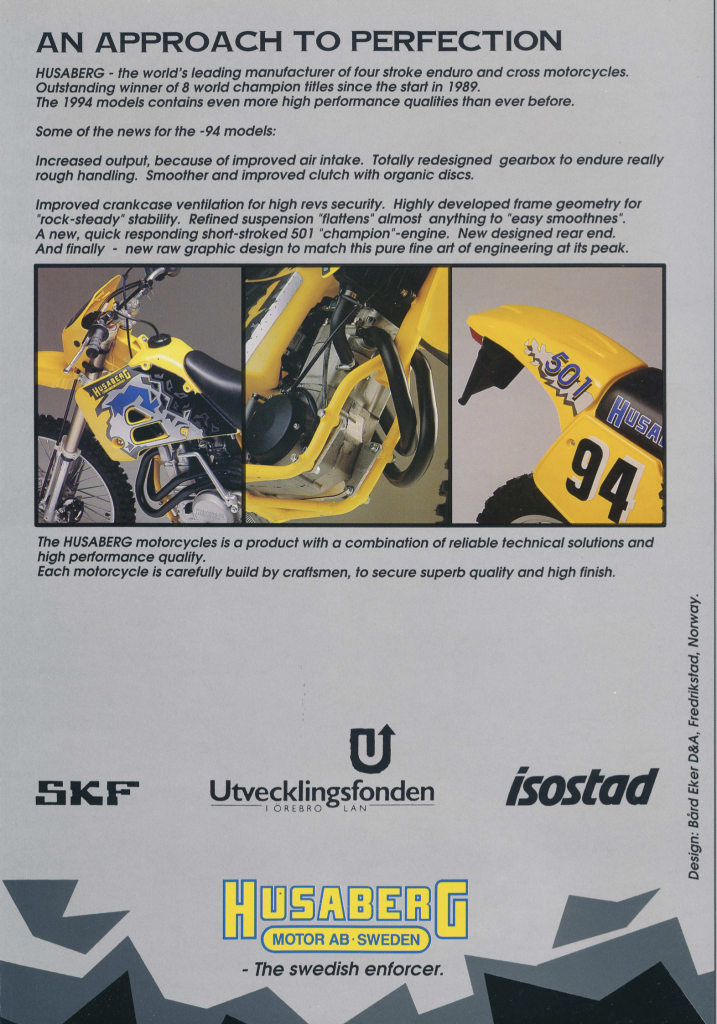 The Husaberg’s styling was a bit of an acquired taste, but its slim ergonomics, light weight, and impressive performance set it apart from a world of converted XRs and air-cooled ATKs. Photo Credit: Husaberg
The Husaberg’s styling was a bit of an acquired taste, but its slim ergonomics, light weight, and impressive performance set it apart from a world of converted XRs and air-cooled ATKs. Photo Credit: Husaberg
While Husaberg was incredibly successful on the world stage, that success never translated to massive sales for the brand. Despite their impressive results on the track, Husaberg remained mostly a curiosity in America. Japan’s apathy toward the Open class and America’s obsession with Supercross meant the market for big and powerful four-strokes remained mostly focused in the off-road arena. Husabergs offered impressive performance, but their overall sales remained minuscule in comparison to their Japanese and European rivals.
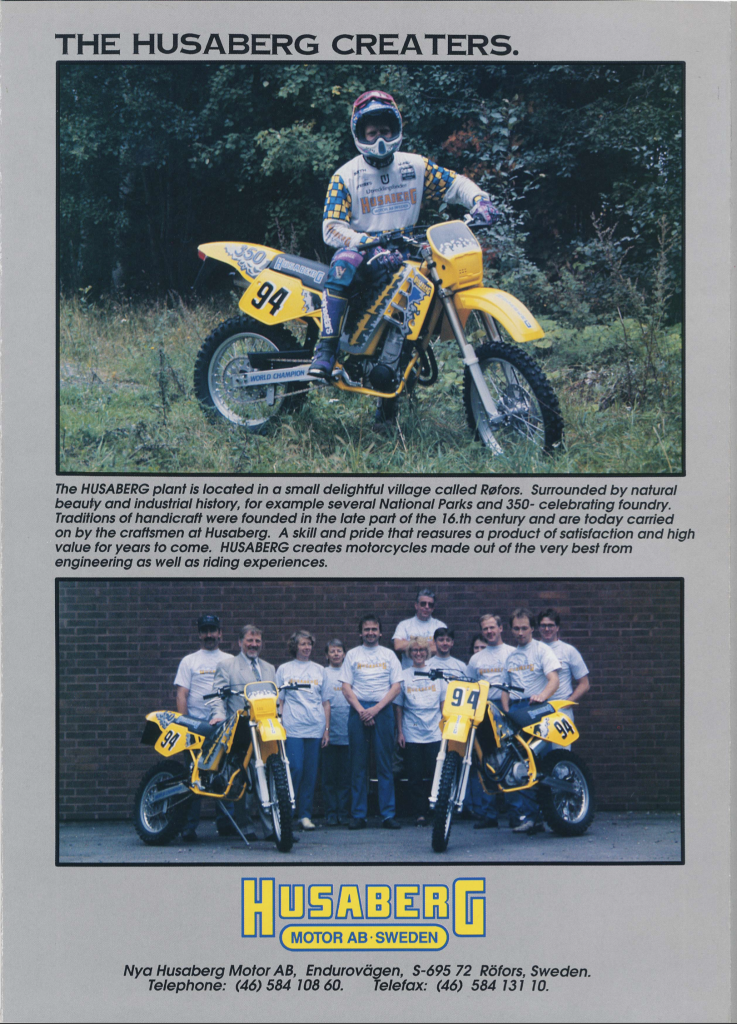 The tiny size of Husaberg’s operation made their incredible racing success all the more impressive. Photo Credit: Husaberg
The tiny size of Husaberg’s operation made their incredible racing success all the more impressive. Photo Credit: Husaberg
Despite its relatively small sales numbers, Husaberg’s on-track success did pique the interest of larger players in the field. Husaberg’s impressive results and four-stroke know-how led KTM to purchase the Swedish brand in 1995. This gave Husaberg a much-needed influx of resources and allowed KTM to benefit from Husaberg’s years of experience in racing four-stroke design. The culmination of this pairing would eventually be the KTM 520SX which borrowed many of Husaberg’s design elements to deliver the first real competitor to Yamaha’s incredibly popular YZ400/426F.
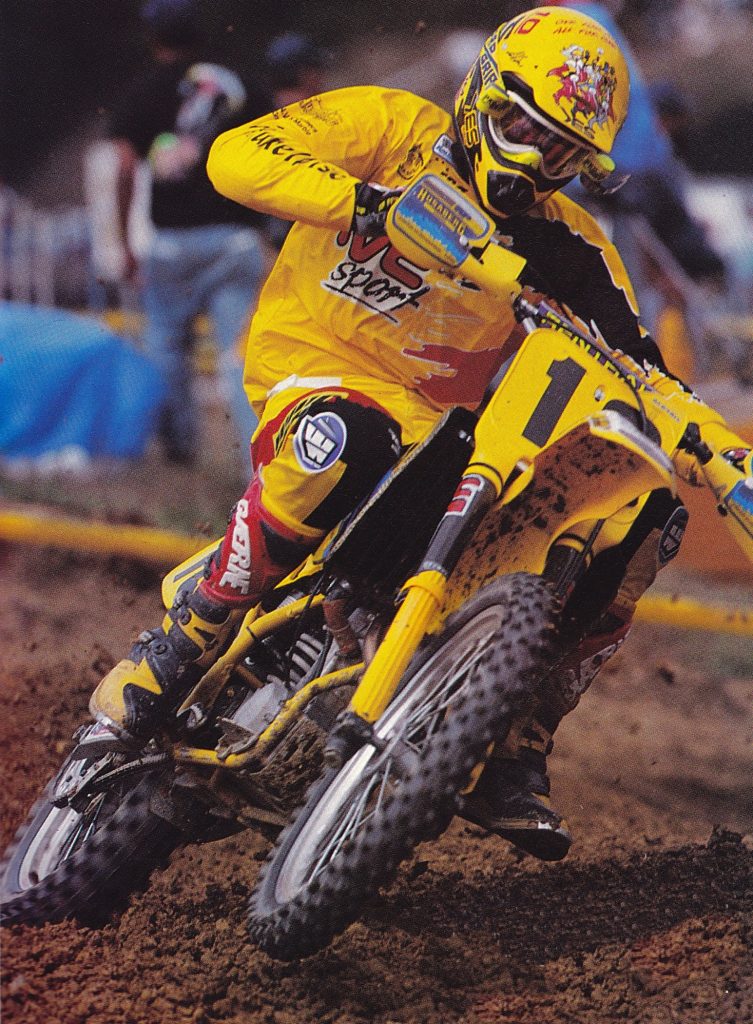 In 1995, Begium’s Joël Smets delivered Husaberg the first of its three 500cc World Motocross titles. Photo Credit: Motocross Action
In 1995, Begium’s Joël Smets delivered Husaberg the first of its three 500cc World Motocross titles. Photo Credit: Motocross Action
While the influx of resources from KTM helped Husaberg improve build quality and parts availability, the brand never rose above a niche player in terms of sales. KTM continued to produce the quirky Swedish machines but the arrival of the 520SX signaled KTM’s desire to move their four-stoke focus to their core brand. Unique styling and interesting innovations like a “laid-down” cylinder configuration continued to set the Husaberg apart from its orange parent, but its run as a brand eventually ended in 2014 with KTM’s acquisition of Husqvarna from BMW. In an interesting twist of fate, the original Swedish brand signaled the end of the line for the upstart it inspired.
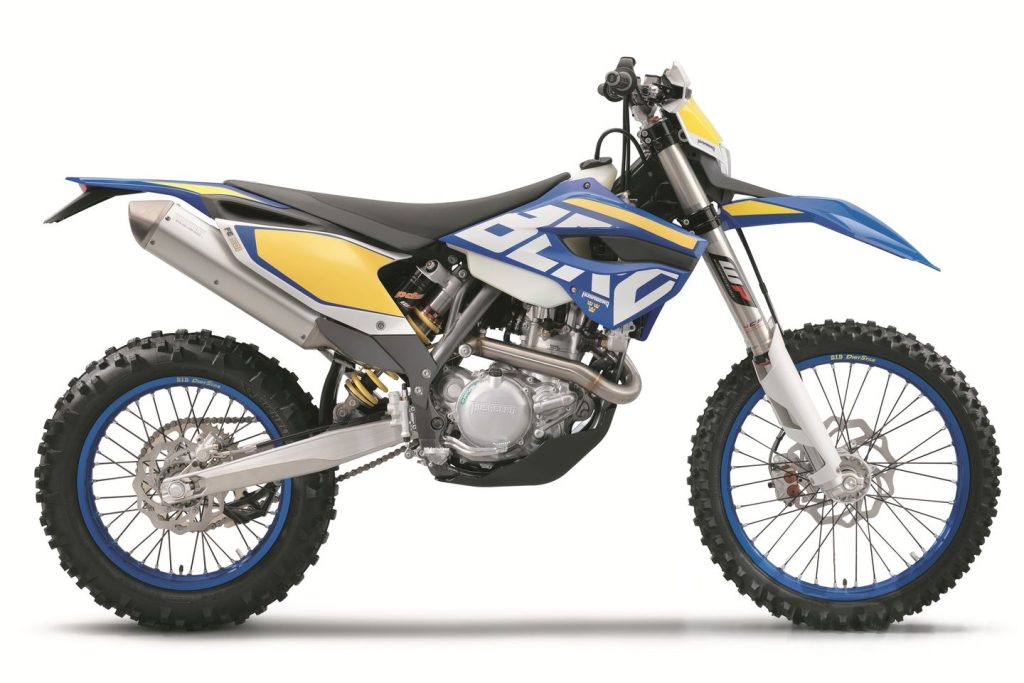 In 2014, KTM’s acquisition of Husqvarna signaled the end of the line for Husaberg as a stand-alone brand. Photo Credit: Husaberg
In 2014, KTM’s acquisition of Husqvarna signaled the end of the line for Husaberg as a stand-alone brand. Photo Credit: Husaberg




